The 1892-O Morgan Silver Dollar value ranges from $36 in Good condition to $119,000 for rare MS-67 specimens. Minted in New Orleans with 2,744,000 coins produced, circulated examples sell for $48-$200, while uncirculated versions fetch significantly more: MS-63 (~$1,059), MS-65 (~$3,320), and MS-66 (~$26,995). Value depends on grade, strike quality (many have weak strikes), surface condition, and mint errors like doubled ears. The relatively low mintage combined with common poor strikes makes sharply struck, high-grade examples particularly valuable to collectors.
Finding an 1892 Morgan silver dollar in your grandmother’s attic could mean discovering anything from $35 to an astonishing $119,000, depending on which mint produced it and its condition. The 1892 issue marks a fascinating year in Morgan dollar history, with four different mints striking coins that now command vastly different prices. Whether you’re examining a Philadelphia coin without a mint mark, a scarce Carson City piece, or a weakly struck New Orleans specimen, understanding the specific value factors can mean the difference between selling for pocket change or securing a small fortune.
Why 1892 Morgan Dollars Command Premium Prices
The 1892 Morgan dollar holds special significance among collectors because it represents the first year of the series’ second production phase after a brief hiatus. Following the Bland-Allison Act’s expiration, the new Sherman Silver Purchase Act required even more silver coinage, but economic uncertainty meant smaller mintages at several facilities.
Total production across all four mints reached only 6,636,529 pieces—a relatively modest number compared to earlier years when single mints sometimes exceeded 10 million coins. This scarcity became more pronounced in higher grades, where weak strikes and heavy bag marks plagued certain mint outputs.
The Carson City mint produced just 1,352,000 pieces before closing permanently three years later, making every 1892-CC dollar a piece of Western minting history. Meanwhile, the New Orleans facility struggled with die maintenance issues that left many coins with mushy details, particularly in Liberty’s hair and the eagle’s breast feathers.
1892 No Mint Mark Morgan Dollar Values
Philadelphia struck 1,036,529 Morgan dollars in 1892 without applying any mint mark, making this the second-scarcest variety of the year after Carson City. Collectors prize well-struck examples because the Philadelphia mint generally maintained higher production standards than branch facilities.
1892 Philadelphia Value Table:
| Grade | Value Range |
|---|---|
| Good-4 | $32-$38 |
| Fine-12 | $40-$45 |
| Very Fine-20 | $42-$50 |
| Extremely Fine-40 | $48-$58 |
| About Uncirculated-50 | $62-$85 |
| MS-60 | $95-$140 |
| MS-63 | $185-$280 |
| MS-65 | $1,450-$2,200 |
| MS-66 | $4,800-$7,500 |
| MS-67 | $38,000-$65,000 |
A magnificent MS-67 specimen sold through Heritage Auctions in January 2022 for $52,800, showcasing brilliant cartwheel luster and sharp strikes across all design elements. The coin exhibited minimal contact marks and possessed the kind of eye appeal that pushes prices into five-figure territory.
Circulated examples remain affordable, with typical Very Fine specimens trading around $45 at most coin shops. However, the jump to uncirculated grades is substantial—an MS-63 coin commands approximately $220, while MS-65 examples reach $1,800 according to PCGS price guides from 2024.
Look for strong definition in Liberty’s hair curls above her ear and complete feather separation on the eagle’s breast. Many Philadelphia strikes show weakness in these areas despite the mint’s reputation, so fully struck coins carry significant premiums.
1892-CC Carson City Dollar: The Crown Jewel
The 1892-CC represents the most desirable variety of the year, with 1,352,000 minted at the legendary Carson City facility in Nevada. This mint would close in 1893, making the 1892-CC one of the final Morgan dollars bearing the coveted double-C mint mark.
1892-CC Value Table:
| Grade | Value Range |
|---|---|
| Good-4 | $285-$325 |
| Fine-12 | $365-$425 |
| Very Fine-20 | $450-$520 |
| Extremely Fine-40 | $625-$750 |
| About Uncirculated-50 | $875-$1,100 |
| MS-60 | $1,650-$2,200 |
| MS-63 | $3,400-$4,800 |
| MS-65 | $18,500-$28,000 |
| MS-66 | $72,000-$95,000 |
| MS-67 | $200,000+ |
Even heavily worn examples start at $300, reflecting the strong collector demand for anything from Carson City. A Very Fine-20 specimen with honest wear and original gray toning typically sells for $480-$500 at major auction houses.
The dramatic price escalation occurs in mint state grades. According to Stack’s Bowers auction records from 2023, an MS-65 example with prooflike fields realized $24,150, while an exceptional MS-66 brought $84,000 in the same sale. The finest known MS-67 specimen, certified by PCGS, last traded privately for an estimated $225,000 in 2021.
Strike quality varies considerably on Carson City issues. Many show softness on Liberty’s ear and the eagle’s left leg, so coins with full central details command substantial premiums. Examine the mint mark itself—it should show clear, sharp serifs on both C letters without any mushiness.
1892-O New Orleans: The Strike Challenge
New Orleans produced 2,744,000 Morgan dollars in 1892, the highest mintage of the year, yet high-grade specimens remain surprisingly scarce due to persistent strike weakness. The New Orleans mint struggled with worn dies and inadequate striking pressure throughout the 1890s.
1892-O Value Table:
| Grade | Value Range |
|---|---|
| Good-4 | $34-$40 |
| Fine-12 | $42-$48 |
| Very Fine-20 | $46-$52 |
| Extremely Fine-40 | $54-$68 |
| About Uncirculated-50 | $72-$95 |
| MS-60 | $120-$185 |
| MS-63 | $950-$1,200 |
| MS-65 | $3,100-$3,800 |
| MS-66 | $24,000-$30,000 |
| MS-67 | $100,000-$119,000 |
Circulated 1892-O dollars remain affordable, with typical Very Fine examples available for $48-$50. The real story unfolds in uncirculated grades, where strike quality separates common coins from valuable rarities.
A typical MS-63 specimen with acceptable luster but flat centers might sell for $1,000, while a sharply struck example with full hair detail and strong eagle feathers could reach $1,400. The gap widens dramatically in gem grades—an MS-65 with weak strike elements trades around $3,200, but a fully struck MS-65 brought $5,750 at a Heritage auction in March 2023.
The legendary MS-67 specimen, one of only three certified at that level by PCGS, sold for $119,000 in 2019. This coin represents the finest known example with razor-sharp details across every design element—a remarkable achievement for the New Orleans mint.
When examining 1892-O dollars, check Liberty’s hair above her forehead and around her ear. Also inspect the eagle’s breast feathers and the cotton bolls in the wreath. These areas typically show the most weakness. Coins with strong strikes in these diagnostic areas deserve significant premiums.
1892-S San Francisco Production
San Francisco minted 1,200,000 Morgan dollars in 1892, making this the second-scarcest variety after Philadelphia. The San Francisco mint generally produced better strikes than New Orleans but not quite matching Philadelphia’s consistency.
1892-S Value Table:
| Grade | Value Range |
|---|---|
| Good-4 | $36-$42 |
| Fine-12 | $45-$52 |
| Very Fine-20 | $52-$62 |
| Extremely Fine-40 | $68-$85 |
| About Uncirculated-50 | $95-$135 |
| MS-60 | $225-$320 |
| MS-63 | $1,850-$2,400 |
| MS-65 | $9,500-$13,500 |
| MS-66 | $42,000-$58,000 |
| MS-67 | $135,000+ |
The 1892-S carries a noticeable premium over the New Orleans issue across all grades. A Very Fine-20 example typically sells for $55-$60, while Extremely Fine specimens reach $75-$80 at coin shows.
Uncirculated examples show significant value, with MS-63 coins trading around $2,100 according to NGC price guide data from 2024. An MS-65 example sold through Legend Auctions in September 2022 for $11,400, showing excellent eye appeal with frosty luster and minimal contact marks.
The finest certified MS-67 specimen, graded by PCGS, realized $138,000 at a Stack’s Bowers auction in 2020. Only two coins have achieved this grade level from PCGS, making gem examples exceptionally rare.
San Francisco strikes typically show better definition than New Orleans coins but often display prominent die polishing lines in the fields. These raised lines, created when mint employees polished dies to remove clash marks, don’t necessarily reduce value unless excessive. Focus instead on overall strike sharpness and surface preservation.
Valuable 1892 Morgan Dollar Errors
Error coins from 1892 can command substantial premiums depending on the type and visibility of the mistake. The most valuable errors show dramatic visual impact while maintaining decent overall condition.
Doubled Die Obverse examples show doubling on design elements, particularly noticeable in the date, LIBERTY inscription, or stars. A 1892 Philadelphia doubled die variety with strong doubling in the date and stars sold for $3,850 in AU-58 condition at a Great Collections auction in 2023. Most minor doubled die varieties add 20-40% premiums in uncirculated grades.
Partial Collar Errors occur when coins aren’t fully seated in the collar die, creating uneven reeding and an off-center appearance. A 1892-O partial collar error in MS-62 condition realized $1,450 in 2022, roughly triple the value of a normal MS-62 specimen.
Off-Center Strikes show design elements shifted from their normal position while retaining a complete date. A 1892 Philadelphia dollar struck 5% off-center sold for $2,200 in MS-61 condition. The value increases with the percentage off-center, provided the date remains fully visible.
Die Cracks and Cuds appear as raised lines or blobs of metal caused by broken dies. Major cud errors on 1892 Morgans typically add $200-$500 in circulated grades, while mint state examples with dramatic cuds can bring $1,000-$2,000.
Lamination Errors result from impurities in the silver planchet that cause metal to peel away. A 1892-S with a large lamination error across Liberty’s face sold for $875 in Very Fine condition, about 15 times the normal value for that grade.
The most valuable errors combine rarity, visual drama, and decent preservation. A 1892-CC with a major die break across the entire reverse, certified as AU-55, brought $4,600 in 2023—the Carson City mint mark plus the error created exceptional collector interest.
Grading Details That Impact Your Coin’s Value
Understanding the specific grading criteria for Morgan dollars helps you accurately assess value and avoid overpaying for problem coins. Professional grading services like PCGS and NGC use consistent standards, but knowing what they evaluate empowers better buying decisions.
Luster quality significantly affects grading and value. Original mint luster should appear frosty or satiny with cartwheel rotation effects under light. Cleaned coins show hairline scratches in the fields and lack natural luster, typically receiving “Details” grades that reduce value by 50-70%.
Contact marks from bag handling appear on virtually all Morgan dollars except the finest prooflike specimens. Graders evaluate mark size, location, and number. Marks on Liberty’s cheek or in open field areas count heavily against grade, while marks hidden in hair details or among stars matter less. An MS-64 coin might have 3-4 small cheek marks, while MS-65 specimens show no significant facial contact.
Strike weakness particularly affects New Orleans issues but appears across all mints. Check Liberty’s ear lobe—it should show complete separation from her hair. Examine the hair curls above her forehead for full definition. On the reverse, eagle breast feathers should display clear separation, not mushy blobs. Strike quality doesn’t affect the technical grade but impacts market value substantially, with fully struck coins bringing 20-50% premiums.
Toning patterns range from attractive album toning in blues, greens, and golds to ugly brown or black environmental damage. Beautiful rainbow toning can add 30-100% premiums on high-grade coins, while unattractive toning reduces value by 20-40%. Original white coins without toning also command strong prices if genuinely untoned rather than dipped.
Die polish lines appear as raised lines on San Francisco and Carson City issues where mint workers polished dies. Light die polish doesn’t affect grade but heavy lines reduce eye appeal. Some collectors specifically seek coins without die polish, creating modest premiums.
A coin graded MS-65 by PCGS typically sells for market value, while a raw (ungraded) coin that appears MS-65 might trade at MS-63 prices due to buyer uncertainty. Professional grading costs $20-$45 per coin depending on service level, worthwhile for any 1892 Morgan that might grade MS-63 or better.
Authentication Tips for Spotting Counterfeits
The high values commanded by 1892 Morgan dollars, especially Carson City issues, have attracted counterfeiters producing increasingly sophisticated fakes. Learning authentication basics protects your investment and helps you avoid costly mistakes.
Weight verification provides the first authentication step. Genuine Morgan dollars weigh 26.73 grams with a tolerance of approximately 0.1 grams. Digital scales accurate to 0.01 grams cost under $20 and immediately identify many counterfeits. Chinese-made fakes often weigh 25.5-26.2 grams due to different metal compositions.
Diameter and thickness measurements catch other fakes. Morgan dollars measure 38.1mm in diameter and 2.4-2.9mm thick depending on strike pressure. Counterfeiters sometimes cast coins that measure 38.5mm or show incorrect thickness profiles.
Mint mark examination reveals added or altered marks on valuable varieties. Genuine 1892-CC mint marks show specific serif styles and positioning. Fake CC marks often appear too small, too large, or positioned incorrectly. Compare suspected Carson City pieces against verified examples using high magnification—the C letters should match exactly in shape, spacing, and punch depth.
Some counterfeiters add CC mint marks to common Philadelphia dollars. Look for evidence of tooling, different metal color in the mint mark area, or disturbed fields around the letters. Genuine mint marks punch into the die before striking, creating undisturbed metal flow around the letters.
Magnetic testing quickly identifies steel-core counterfeits. Genuine silver Morgan dollars show no magnetic attraction. If a magnet sticks to your coin, it’s fake. Some sophisticated fakes use non-magnetic metals, so passing this test doesn’t guarantee authenticity, but failing confirms a counterfeit.
Sound testing helps experienced collectors identify fakes. Genuine silver dollars produce a clear, sustained ring when balanced on a fingertip and tapped with another coin. Counterfeits often produce dull thuds due to different metal compositions or casting bubbles. This method requires practice with known genuine coins.
Edge reeding should show evenly spaced ridges completely around the coin’s circumference. Counterfeit Morgan dollars sometimes show irregular reeding, wrong reeding count (genuine coins have approximately 177 reeds), or mushy reed definition from casting rather than striking.
For coins worth over $500, professional authentication through PCGS or NGC provides definitive answers. Their authentication services cost $20-$30 and include basic grading, well worth the expense before purchasing expensive Carson City or high-grade examples.
Market Trends and Smart Buying Strategies
Morgan dollar values have shown steady appreciation over the past decade, with certain dates and mint marks outperforming others. Understanding current market dynamics helps you buy strategically and avoid overpaying during temporary price spikes.
The 1892-CC has appreciated approximately 85% in MS-65 grade since 2015, rising from $15,000 to $27,000 according to PCGS price tracking data. This growth reflects increasing collector interest in Carson City issues and decreasing availability as coins move into long-term collections.
Philadelphia and San Francisco issues from 1892 have shown more modest 25-35% appreciation in mint state grades, while common-date circulated examples increased only 10-15% during the same period. This pattern suggests that scarce, high-grade coins offer better investment potential than common circulated pieces.
Auction versus dealer pricing shows significant variations. Major auction houses like Heritage, Stack’s Bowers, and Legend typically achieve strong prices for premium-quality coins with excellent eye appeal. Average-quality coins often sell at or below wholesale levels at auction. Dealers generally price inventory 15-25% above wholesale, providing guaranteed availability but smaller potential bargains.
Seasonal patterns affect pricing, with major auctions clustered in January, April, August, and November typically showing stronger prices due to concentrated buyer participation. Summer months often see softer prices as dealers offer discounts to move inventory during slower periods.
Bulk purchases of circulated 1892 Morgans sometimes appear at coin shows, where dealers offer quantity discounts. A dealer might ask $50 each for individual Very Fine 1892-O dollars but accept $42 each for five or more pieces. This strategy works well for collectors building type sets or investors accumulating silver.
Certification premiums vary by grading service. PCGS-certified 1892 Morgans typically command 5-10% premiums over NGC-certified examples in identical grades, though both services maintain high standards. CAC (Certified Acceptance Corporation) stickered coins showing premium quality for the grade bring additional 15-30% premiums.
Smart collectors focus on buying the best quality they can afford rather than accumulating quantity. An MS-65 1892-S represents better long-term value than five MS-63 examples at similar total cost, since gem coins appreciate faster and sell more easily.
Watch for coins with original surfaces and attractive toning rather than cleaned or retoned pieces. A naturally toned MS-64 often proves more desirable than a bright white MS-65 that’s been dipped multiple times, potentially selling for similar money despite the grade difference.
Building Your 1892 Morgan Collection
Serious collectors approach 1892 Morgan dollars with strategies ranging from acquiring one representative example to completing a full mint mark set including error varieties. Your approach depends on budget, interests, and collecting goals.
Type collectors seeking a single 1892 example for a Morgan dollar date run should consider the 1892 Philadelphia or 1892-O in circulated grades. These varieties offer legitimate 1892 specimens for $45-$55 in Very Fine condition, providing affordable access to this semi-key year.
Mint mark collectors pursuing all four 1892 varieties face significantly higher costs due to the Carson City premium. A complete circulated set in Very Fine grade costs approximately $1,100-$1,300, with the 1892-CC representing $450-$500 of that total. Budget an additional $550-$650 for the other three varieties combined.
Building a complete uncirculated set requires substantial investment. MS-63 examples across all four mints total approximately $8,000-$9,000, while MS-65 gems exceed $45,000 combined. Few collectors attempt complete gem sets given the expense and scarcity of high-grade 1892-CC and 1892-S specimens.
Variety hunters focus on die variations, errors, and unusual characteristics. The 1892 Philadelphia doubled die varieties offer collecting challenges without Carson City price tags. Known varieties include VAM-2 through VAM-7 (VAM stands for Van Allen-Mallis, authors of the comprehensive variety reference). Most trade for $85-$150 in MS-63 condition, with the strongest doubled die bringing $300-$400.
Registry set competition through PCGS and NGC attracts advanced collectors building finest-known sets. Registry participants compete for highest total point scores based on grade levels, creating strong demand for MS-66 and MS-67 specimens. This competition drives prices for population-top coins, with competitors sometimes paying 50-100% premiums for coins that improve their set rankings.
Consider starting with affordable circulated examples to learn grading standards and market pricing before committing to expensive mint state pieces. Handle multiple 1892 Morgans to understand strike variations, typical bag marks, and luster characteristics. This hands-on education prevents costly mistakes when you eventually purchase premium coins.
Join online communities like the PCGS forums or Coin Talk where experienced collectors share knowledge about 1892 Morgan varieties, recent auction results, and authentication concerns. These resources provide valuable insights beyond what any price guide can offer.
Where Smart Collectors Find The Best Examples
Knowing where to buy 1892 Morgan dollars significantly impacts both selection and pricing. Different venues offer distinct advantages depending on your experience level and what you’re seeking.
Major auction houses like Heritage Auctions, Stack’s Bowers, and Legend Rare Coin Auctions provide the largest selections of certified 1892 Morgans across all grades. Their online platforms feature high-resolution images, detailed descriptions, and transparent bidding. Buyer’s premiums typically run 17.5-20%, but competitive bidding often results in fair market prices. Heritage alone sold 347 different 1892 Morgan dollars during 2023, offering tremendous selection.
Local coin shops provide hands-on examination before purchasing, crucial for assessing eye appeal and surface quality that photographs don’t fully convey. Expect to pay retail pricing 20-30% above wholesale levels, but you avoid shipping risks and can negotiate, especially when purchasing multiple coins. Shops typically stock common circulated examples but rarely carry high-grade or rare mint mark specimens.
Coin shows combine advantages of multiple dealers in one location with opportunities for hands-on inspection. Major shows like the ANA World’s Fair of Money or FUN (Florida United Numismatists) convention attract hundreds of dealers, creating competitive pricing and excellent selection. Regional shows offer smaller inventories but sometimes reveal hidden treasures from dealer stocks rarely displayed online.
Online marketplaces including eBay provide vast inventories but require careful authentication and seller research. Experienced collectors find legitimate bargains from sellers who undervalue coins or price aggressively. However, counterfeits and problem coins also proliferate. Verify seller ratings, look for return policies, and consider only purchasing certified coins from established dealers when buying online.
Private treaty sales through established dealers offer discreet purchasing of high-value coins. Dealers contact clients directly when they acquire premium pieces, often before public listing. Building relationships with reputable dealers provides access to these off-market opportunities, though expect to pay full retail or higher for exceptional coins.
Estate sales and local auctions occasionally yield undervalued coins when general auctioneers handle collections without specialized numismatic knowledge. These opportunities require attendance at numerous sales to find occasional treasures, but discovering a $50 1892-O selling for $15 makes the effort worthwhile.
Regardless of venue, always verify authenticity before purchasing expensive coins. Request return privileges for authentication if buying uncertified pieces, and compare prices against recent auction results using databases like CoinArchives or PCGS Auction Prices Realized before committing to purchases.
Protecting Your Investment Long-Term
Proper storage and handling of 1892 Morgan dollars preserves both their condition and value over time. Many collectors inadvertently damage coins through improper storage methods or misguided cleaning attempts.
Never clean Morgan dollars under any circumstances. Cleaning removes microscopic surface metal, destroys original mint luster, and creates hairline scratches visible under magnification. A cleaned MS-64 Morgan might receive an “AU Details—Cleaned” grade worth 60-70% less than an unimpaired coin. Even “dipping” in silver cleaner to remove toning damages surfaces and reduces value unless performed professionally.
Certified coins in holders require minimal additional protection beyond their sealed slabs. Store PCGS and NGC holders in a cool, dry location away from direct sunlight. UV exposure can gradually fade toning over decades. Avoid stacking slabs more than 10-12 high to prevent cracking from weight pressure. Silica gel packets in storage containers control humidity.
Raw (uncertified) coins demand careful handling and proper holders. Hold coins by their edges only, never touching obverse or reverse surfaces. Skin oils contain acids that create permanent fingerprint etching visible under magnification. Wear cotton gloves when handling valuable raw coins, though experts debate whether gloves sometimes cause more slippage problems than they prevent.
Store raw Morgan dollars in individual non-PVC plastic flips, paper envelopes, or rigid plastic holders. Avoid flips marked “vinyl” or those with greenish plastic—these contain PVC (polyvinyl chloride) that leaches onto coin surfaces, creating green slime damage. Proper flips are marked “Mylar” or “Saflip” and remain crystal clear indefinitely.
Climate control matters significantly for long-term preservation. Ideal storage conditions maintain 30-50% relative humidity and temperatures between 65-70°F. High humidity promotes toning and can eventually cause environmental damage. Extremely low humidity rarely harms silver coins but can deteriorate paper holders and envelopes.
Insurance coverage through specialized collectibles policies protects against theft, fire, and loss. Homeowner’s policies typically limit coverage to $1,000-$2,500 for coin collections unless specifically scheduled. Hugh Wood Inc., American Collectors Insurance, and Collectibles Insurance Services offer specialized numismatic policies costing approximately $1-$2 per $100 of coverage annually.
Document your collection with photographs, certification numbers, and purchase receipts. Store documentation separately from the coins themselves so proof of ownership survives if coins are stolen. PCGS and NGC maintain population databases that can help verify authentic certification numbers if holders are separated from coins.
Consider a bank safe deposit box for high-value specimens worth over $5,000. Annual rental costs of $40-$150 provide secure storage and fire protection. Keep moderate-value coins at home in a quality safe for accessibility while protecting your most valuable pieces off-site.
Where To Sell When You’re Ready
Eventually, most collectors sell portions of their holdings to fund upgrades, settle estates, or simply realize profits. Understanding sales channels helps maximize returns while avoiding unfavorable deals.
Auction consignment through major houses works best for coins worth over $1,000 individually or $10,000+ collections. Heritage, Stack’s Bowers, and Legend achieve strong prices for quality material by exposing coins to thousands of active bidders. Consignment contracts typically charge 10-15% seller’s fees plus photography and insurance costs. Premium coins receive featured lot status with detailed descriptions that maximize bidding interest.
Processing times run 3-6 months from consignment to payment, so auctions suit sellers without immediate cash needs. The largest sales (April, August, January) attract the most bidders and typically achieve the strongest prices. Request an advance against consignment for immediate funds if needed—auction houses typically provide 25-50% advances that settle after the sale.
Dealer purchases provide immediate payment but realize 30-50% less than retail values. Dealers must resell at profit, so their buy prices reflect wholesale levels. For common circulated 1892 Morgans worth $50 retail, expect dealer offers around $30-$35. High-grade specimens receive better offers closer to 70-80% of retail from dealers specializing in Morgan dollars who have waiting customers.
Obtain quotes from multiple dealers before selling. Major shows provide opportunities to shop offers from 10+ dealers within hours. Be realistic about grade and condition—dealers immediately spot cleaned coins, PVC damage, and other problems that reduce value below standard guides.
Online marketplaces like eBay let you reach retail buyers directly but require effort marketing, shipping, and handling customer service. eBay fees total approximately 13-15% between listing fees and final value fees, similar to auction consignment but with immediate listing control and faster payment. Build seller feedback ratings with lower-value coins before listing expensive pieces to establish credibility with potential buyers.
Local coin clubs often include active buyers seeking specific dates and mint marks. Club newsletter advertisements or show-and-tell meetings connect you with collectors who may pay retail prices for needed coins. This venue works particularly well for moderately priced coins ($100-$500) where auction houses and major dealers show limited interest.
Private sales through collector networks avoid all selling fees but require finding qualified buyers yourself. Online forums, Facebook groups, and specialized Morgan dollar collecting communities facilitate private transactions. Use PayPal Goods & Services for payment protection despite the 3% fee—never accept untraceable payment methods like wire transfers or money orders from unknown parties.
Regardless of sales method, realistic pricing moves coins faster and achieves better net returns. Overpriced listings languish unsold while reasonable prices attract multiple offers. Research recent auction results for comparable coins, adjust for grade differences and eye appeal, and price competitively. A quick sale at 95% of market value beats holding out for months seeking 105% of market.
Your Next Steps With 1892 Morgan Dollars
Start by examining any 1892 Morgan dollars you currently own under good lighting with magnification. Identify the mint mark—absent for Philadelphia, CC for Carson City, O for New Orleans, or S for San Francisco. Assess the coin’s condition honestly, comparing against graded example photos on the PCGS or NGC websites.
If you own any uncirculated specimens or Carson City examples, consider professional grading before selling or insuring. The certification cost of $30-$45 provides definitive grade authentication and significantly improves marketability for coins worth over $200.
For collectors beginning with 1892 Morgans, acquire a representative circulated example first to study design details and typical wear patterns. Very Fine specimens from Philadelphia or New Orleans provide affordable entry points around $50 while you learn the series.
Research variety listings in the VAM catalog if you enjoy discovering subtle die differences and doubled dies. Variety collecting offers challenges beyond simply acquiring different mint marks, creating ongoing hunting opportunities even after completing basic sets.
Join the Morgan Dollar discussion forums where experienced collectors share recent finds, authentication questions, and market observations. These communities provide invaluable resources for developing your expertise and connecting with knowledgeable collectors willing to share insights.
Remember that Morgan dollar collecting rewards patience and careful study. The difference between a $1,000 coin and a $10,000 coin sometimes comes down to strike sharpness or surface quality subtle enough to require experience to recognize. Build that expertise gradually, handle coins often, compare examples side-by-side, and your ability to spot exceptional quality will develop naturally. Whether you pursue 1892 as a single type coin or build complete high-grade sets, these historical silver dollars offer fascinating collecting opportunities across every budget level.
You may be interested:
- 1859 Indian Head Penny Coin Value Complete Errors List And No Mint Mark Worth Guide For Collectors
- 1911 V Nickel Coin Value Guide Complete Errors List And No Mint Mark Worth Today
- 1902 Dime Coin Value Complete Errors List With O S And No Mint Mark Worth Guide
- 1788 Quarter Coin Value Complete Guide Errors List And D S P Mint Mark Worth Revealed
- 1776 To 1976 Bicentennial Half Dollar Coin Value Complete Errors List And What Your D S And No Mint Mark Coins Are Actually Worth
- 1990 Penny Coin Value Errors List How D S And No Mint Mark Pennies Are Worth Thousands Of Dollars

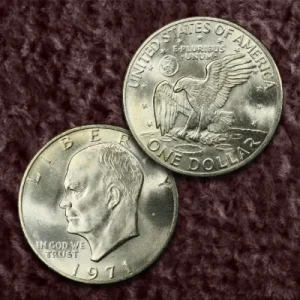
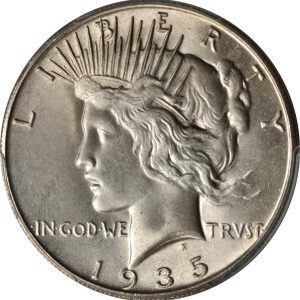
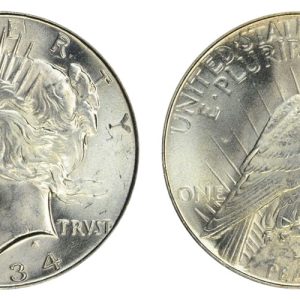
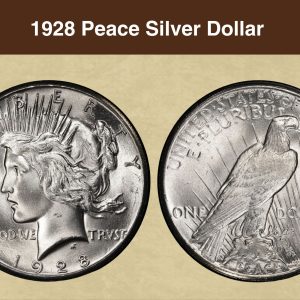
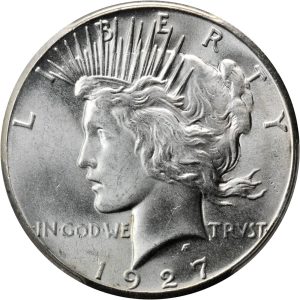
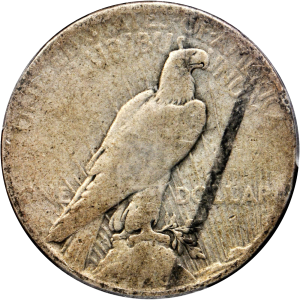
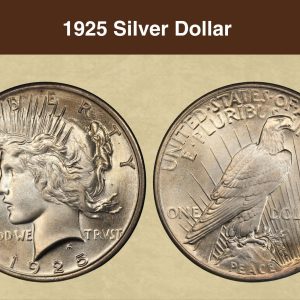
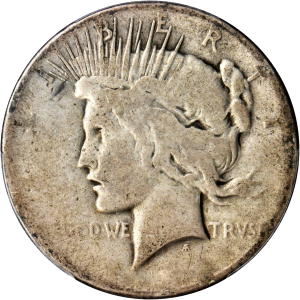
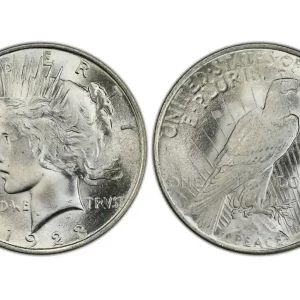
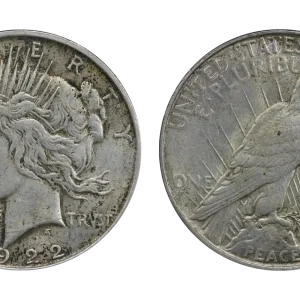
How much is a 1892 O Morgan silver dollar worth today?
The value of an 1892-O Morgan silver dollar varies significantly based on its condition (grade), from approximately $36 in “Good” condition to over $119,000 for a rare MS-67 example. Circulated coins are worth between $48 and $200, while uncirculated versions can fetch thousands depending on their specific grade and strike quality.
What makes a 1892 silver dollar rare?
1892 Morgan Silver Dollars produced at the Philadelphia Mint are worth more and scarce in the higher Mint State grades. Strike quality varies from weak to sharp, but usually average to below average. Luster varies from dull and poor, to lustrous and flashy. Bagmarks are common.
Which CC Morgan dollar is most valuable?
The most valuable “CC” Morgan dollar is the 1889-CC, due to its extremely low survival rate in high grades, making it one of the rarest Morgan dollars overall. While other “CC” dates like the 1885-CC are rare, the 1889-CC is considered the king of Carson City coins, particularly in Mint State.